To mark the RMBF’s 180th Anniversary, the charity’s Trustees have put forward a 10-strong list of influential doctors who have made vital contributions to the support and reform of the profession. Each doctor nominated has had a significant influence on today’s working practices: from fighting for the right of women to study and practise medicine, to establishing professional organisations that still support doctors today.
Read their stories and vote for your Doctor’s Doctor below.
The Doctor’s Doctor: our nominees
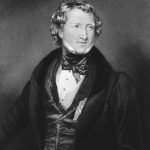 Thomas Wakley
Thomas Wakley
Thomas Wakley was an English surgeon. He became a social reformer who campaigned against incompetence, privilege and nepotism. He was the founding editor of The Lancet and a radical MP, speaking in the House of Commons against the Poor Laws, police bills, newspaper tax and Lord’s Day observance, and for Chartism, the Tolpuddle Martyrs, free trade, Irish nationalism and, of course, medical reform. In 1823, he was one of the founders of the now famous medical weekly The Lancet, which by 1830 had a circulation of around 4,000.
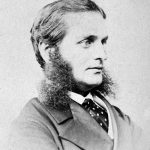 Ernest Hart
Ernest Hart
Ernest Hart was born in London, the son of a Jewish dentist, and studied medicine at St George’s Hospital. In 1856 he became a member of the Royal College of Surgeons, making a specialty of diseases of the eye. He was appointed ophthalmic surgeon at St Mary’s Hospital at the age of 28, and introduced into ophthalmic practice some modifications since widely adopted. His name is associated with a method of treating popliteal aneurism, which he was the first to use in Great Britain.
His true life’s work, however, was as a medical journalist, beginning with The Lancet in 1857 and becoming editor of the British Medical Journal in 1866. He took a leading part in the exposures which led to the inquiry into the state of London work-house infirmaries, and to the reform of the treatment of sick poor throughout England. The Infant Life Protection Act of 1872, aimed at the evils of baby-farming, was largely due to his efforts.
Dr Joseph Rogers
For 40 years, Joseph Rogers promoted reform in the administration of the Poor Law. In 1861, he came before the select committee of the House of Commons, speaking on the supply of drugs in workhouse infirmaries, and his views were adopted. Much of the evidence on which Gathorne Hardy relied in pushing for the Metropolitan Poor Act 1867 came from Rogers. He was the founder, and for some time president, of the Poor Law Medical Officers Association. He helped to establish the Association for the Improvement of the Infirmaries of London Workhouses. The system of poor-law dispensaries and separate sick wards, with proper staffs of medical attendants and nurses, was due to the efforts of Rogers and his colleagues.
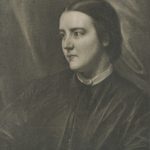 Dr Sophia Jex-Blake
Dr Sophia Jex-Blake
Dr Jex-Blake was an English physician who was instrumental in securing women access to a university education, when she and six other women, collectively known as the ‘Edinburgh Seven’, began studying medicine at the University of Edinburgh in 1869. She was the first practising female doctor in Scotland.
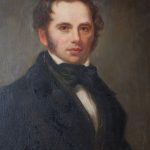 Sir Charles Hastings
Sir Charles Hastings
Sir Charles, a medical surgeon, was one of the founders of the British Medical Association (originally the Provincial Medical and Surgical Association) in 1832. He was also a notable lifelong philanthropist, investing his own money in new housing designed to improve public health, and founding a natural history museum.
Hastings had a close relationship with his home city, Worcester, and made a conscious decision to invest his career in the locality where he had grown up. In 1854 he looked for ways of investing his own money in new living and working accommodation for Worcester’s artisans. These ‘modern dwellings’, as he called them, were well-designed and well-built houses that replaced cramped medieval buildings, cheaply-built terraces and townhouses in the slums where diseases such as typhus would break out.
 Dr Kate Granger
Dr Kate Granger
Kate started the #hellomynameis campaign in 2013, chiefly using Twitter, where by the time of her death, she had over 47,000 followers. The campaign encouraged healthcare staff to introduce themselves to patients and by February 2015 had been endorsed by more than 400,000 doctors, nurses, therapists, receptionists and porters, across over 90 organisations. In February 2014, NHS England created the Kate Granger Awards for Compassionate Care. In June 2014, Granger was elected as a Fellow of the Royal College of Physicians, the first doctor-in-training that the college had ever elected as a fellow, in recognition of her contribution to healthcare.
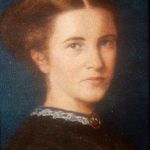 Elizabeth Garrett Anderson
Elizabeth Garrett Anderson
Elizabeth Garrett Anderson was a pioneering physician and political campaigner, the first Englishwoman to qualify as a doctor.
She was the co-founder of the first hospital staffed by women, the first dean of a British medical school, the first female doctor of medicine in France, the first woman in Britain to be elected to a school board and, as Mayor of Aldeburgh, the first female mayor and magistrate in Britain. As a woman, Garrett could not take up a medical post in any hospital, so in late 1865, she opened her own practice at 20 Upper Berkeley Street, London. At first, patients were scarce but the practice gradually grew. After six months in practice, she opened an out-patients dispensary, to enable poor women to obtain medical help from a qualified practitioner of their own gender.
Dr Chuni Lal Katial
In 1935, Dr Katial came to prominence as Chairman of the Public Health Committee of Finsbury Council, where he was responsible for pushing forward a programme for health and housing known as the Finsbury Plan – an ambitious scheme to build a centralised facility that would incorporate a health centre, libraries, public baths and nurseries in the famously working-class area. In 1937, as part of this plan, Dr Katial commissioned the building of the Finsbury Health Centre. The Centre was renowned both for its architectural style and its new approach to centralised health, housing multiple free medical facilities under one roof and predating the National Health Service by over 10 years.
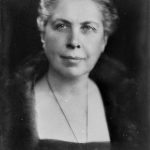 Dr Christine Murrell
Dr Christine Murrell
Born in 1874, Christine Murrell was a doctor and psychologist. She set up a private practice in Bayswater with her lifelong partner and friend Dr Elizabeth Honor Bone. Murrell was the first woman to be elected to the Council of the British Medical Association, and the second woman to be appointed to a resident post at the Royal Free Hospital. A feminist, she promoted equal opportunities in the medical profession and was president of the Medical Women’s Federation from 1926-28. She also promoted enlightened sex education.
Dr Dipak Ray
Dr Dipak Ray, who died in 2012, was a popular and innovative family doctor who was among the pioneers of patient involvement in the running of surgeries. He was also heavily involved in medical politics and campaigning against racism in the profession.
Born in Orissa, India, Dipak trained in Calcutta (now Kolkata) and came to work in the UK in the late 1950s after a stint in the US, attracted by the NHS’s aim of providing a uniform standard of care to all patients. He went to work as a GP in south Wales in the early 1960s.
Dipak was a dedicated anti-racist campaigner, taking part in marches, running educational sessions on racism and becoming a commissioner of the Commission for Racial Equality. He advocated dialogue over confrontation and never lost his sense of humour. He liked to recall that, when working as a hospital doctor, a consultant complained that Indian doctors took sick leave to watch cricket. Dipak replied that “they must be sick if they are watching English cricket”.
Vote for your Doctor’s Doctor
Voting is now closed. See the results here!
Image credits
Ernest Hart: By G.R. Fitt [CC BY 4.0], via Wikimedia Commons
Dr Kate Granger: اثبات اعسار [CC BY 2.0], via Wikimedia Commons
Dr Christine Murrell: Wellcome Library, London. Wellcome Images. See page for author [CC BY 4.0], via Wikimedia Commons
Other images public domain
